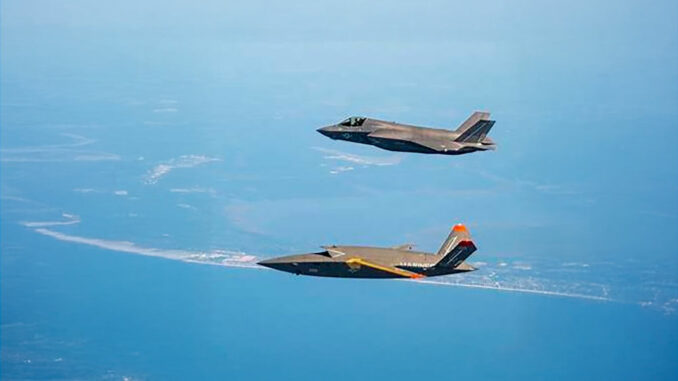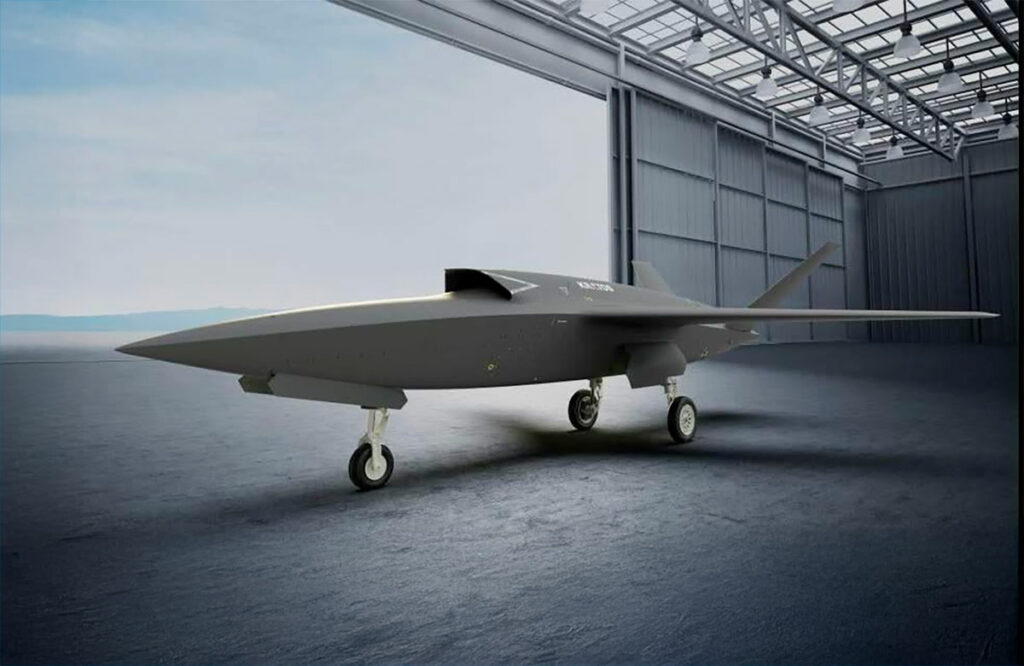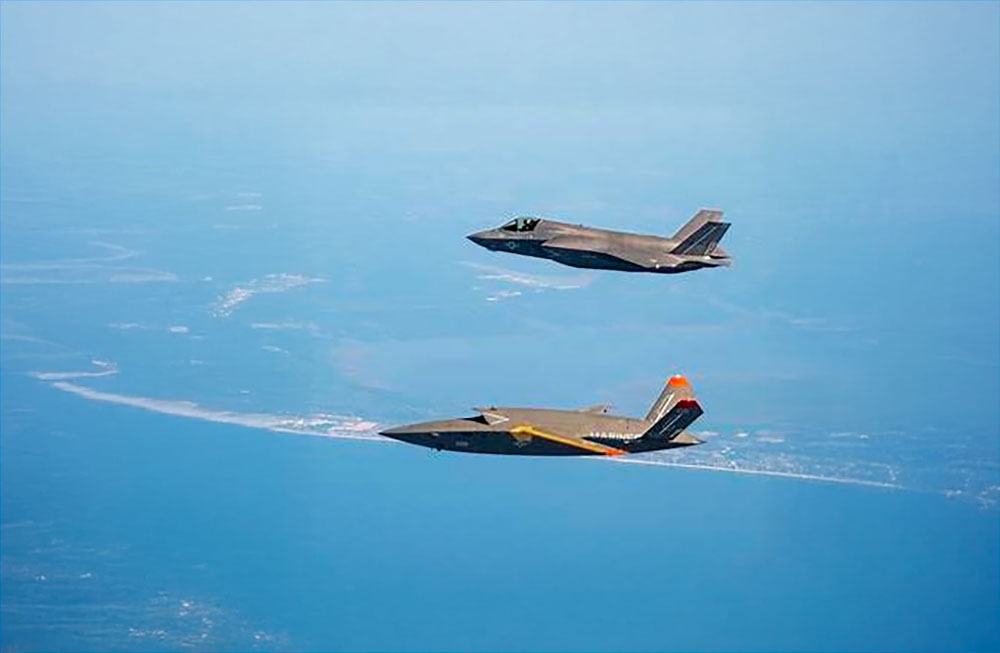
Detailed analysis of the Marines’ PAACK-P program, integrating the XQ-58A Valkyrie drone for collaborative autonomous missions.
The Penetrating Affordable Autonomous Collaborative Killer-Portfolio (PAACK-P) is an initiative of the United States Marine Corps aimed at integrating autonomous drones into collaborative combat missions. At the heart of this program is the XQ-58A Valkyrie drone, developed by Kratos Defense, designed to operate alongside piloted aircraft such as the F-35B. The program aims to enhance strike and reconnaissance capabilities while reducing risks to human pilots.

The XQ-58A Valkyrie drone: features and performance
The XQ-58A Valkyrie is an autonomous tactical drone, measuring approximately 9.1 meters long with a wingspan of 8.2 meters. It can carry an internal payload of 272 kg, reach a cruising speed of Mach 0.72, and travel up to 5,556 km. Its unit cost is estimated at a few million dollars, a fraction of the price of an advanced manned fighter jet.
Designed to be launched without a runway, the Valkyrie can operate from austere areas, offering increased operational flexibility. Its modular architecture allows for the integration of various sensors and weapon systems, making it adaptable to multiple missions, including reconnaissance, electronic warfare, and precision strikes.
The drone is equipped with advanced communication systems, allowing it to share data in real time with other platforms, including manned aircraft. This networking capability is essential for collaborative combat operations, where coordination between different units is crucial.
The objectives of the PAACK-P program
The PAACK-P program aims to develop and test concepts for collaborative combat between autonomous drones and piloted aircraft. The main objectives include:
- Evaluating the ability of drones to perform intelligence, surveillance, and reconnaissance (ISR) missions autonomously.
- Testing the effectiveness of electronic warfare conducted by drones in support of piloted platforms.
- To explore the use of artificial intelligence to enable drones to make tactical decisions in real time.
- To develop procedures for teamwork between drones and piloted aircraft, with an emphasis on safety and efficiency.
Tests conducted to date have shown that the Valkyrie can operate in coordination with F-35Bs, sharing information and executing joint missions. These trials have also identified challenges related to the integration of autonomous systems into complex operations.
The challenges of human-machine integration
One of the main challenges of the PAACK-P program is to ensure effective coordination between autonomous drones and piloted aircraft. Collision risks, communication interference, and differences in decision-making are all factors to consider.
Efforts are underway to develop advanced detection and avoidance systems that will enable drones to navigate safely in environments shared with piloted aircraft. In addition, the integration of artificial intelligence aims to improve the ability of drones to interpret the intentions of human pilots and adapt their behavior accordingly.
Training for drone pilots and operators is also crucial to ensuring effective collaboration. Clear communication protocols and standardized procedures are needed to minimize risks and maximize the effectiveness of joint missions.

Future prospects and strategic implications
The PAACK-P program represents a significant step forward in the integration of autonomous systems into military operations. By combining the flexibility of drones with the decision-making capabilities of human pilots, armed forces can extend their reach and effectiveness while reducing risks to personnel.
In the future, the experience gained with Valkyrie could be applied to other platforms and missions, including joint and allied operations. The rapid evolution of artificial intelligence and autonomous systems technologies is paving the way for innovative operational concepts, transforming the way conflicts are conducted.
However, this transition also raises ethical and strategic questions, particularly with regard to autonomous decision-making in lethal engagements. It is essential that these developments be accompanied by appropriate regulatory frameworks to ensure responsible use in accordance with international standards.
War Wings Daily is an independant magazine.